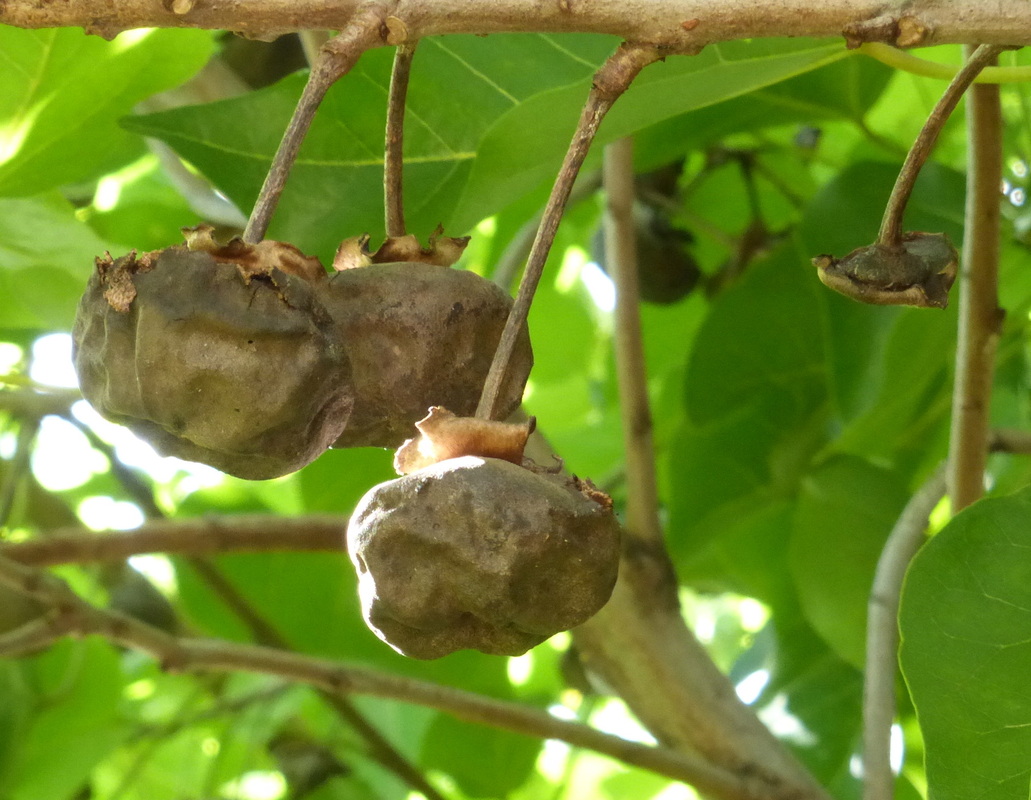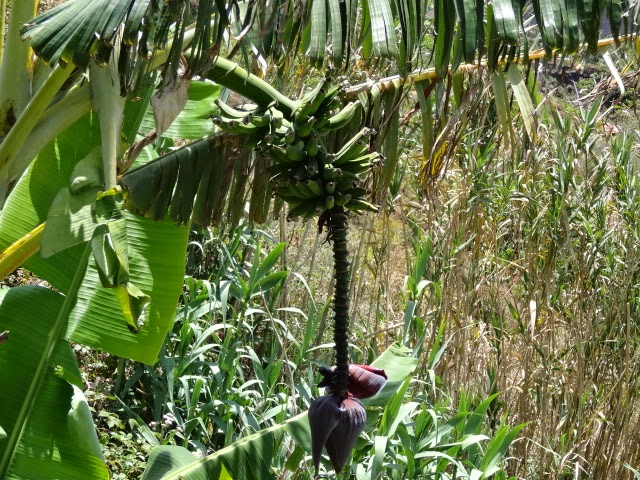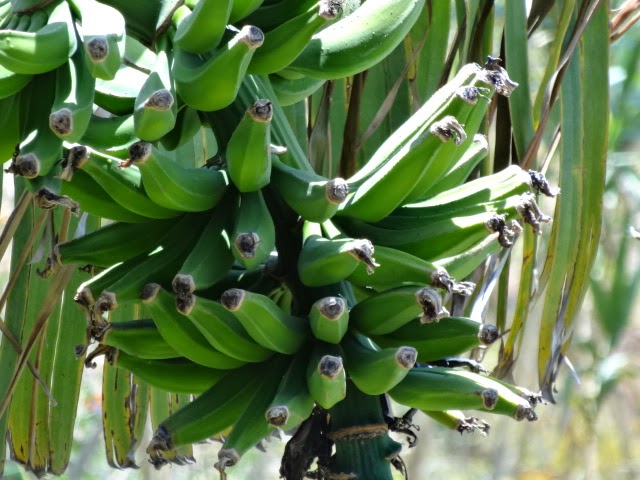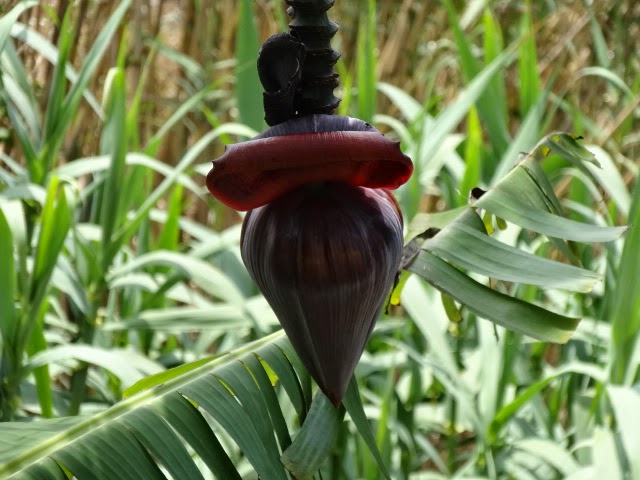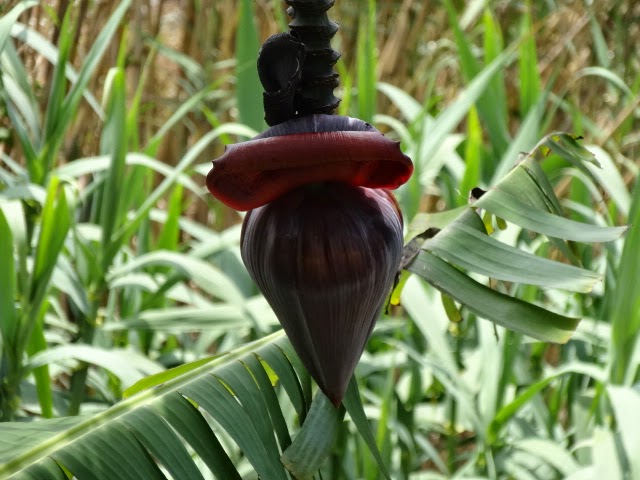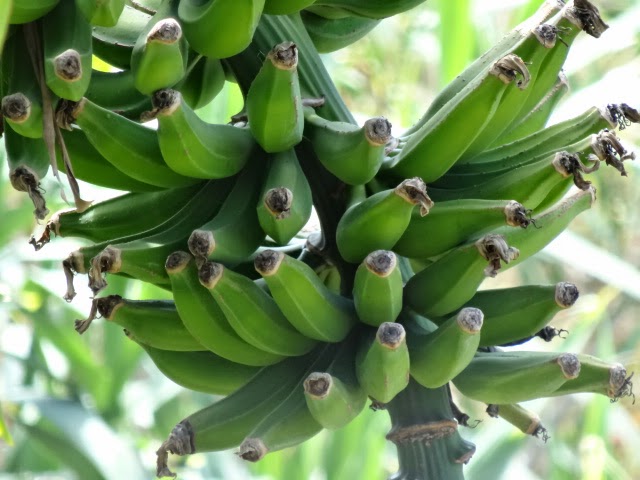 |
| Upon closer inspection, we’ve been thrilled to see the detailed beauty of a red dragonfly that visits each day. More below. |
“Sightings on the Beach in Bali”
 |
| Bonfire over the river near the beach. |
As I wrote today’s heading as shown above, I’m reminded about how “life” and its quality and quantity rules our daily existence…not only our own lives but the beauty and essence of life surrounding us, in creatures big and small and in that which is growing around us.
 |
| The endless varieties of “growing things” Mother Nature bestows upon our earth is astounding. |
It’s easy to forget to appreciate the exquisite varieties, in numbers beyond our comprehension, of living plants, trees, flowers and creatures we encounter in one form or another every single day when we step outdoors and at times, living amongst us indoors.
 |
| Numerous varieties of coconut palms are present worldwide. This is a different variety than we’ve seen in other countries with softer flesh. |
Billions of life forms, therefore are infinitesimal that we are unable to see to the naked eye and others so massive, we run in fear for our lives. In every case, they all serve as food in the food chain and to protect the integrity of their race.
 |
| This frog is not unlike the frog visitor, we saw almost every day in South Africa in 2014. She/he would disappear for several days, only to return to exactly the same place. See this link at the end of the post for that photo. Even the smallest creatures have their own routine. As I write here today, she’s sitting in the same spot by the Koi pond as when we took this photo a few days ago. |
None are insignificant, even those we fear, incapable of imagining what purpose they accomplish upon this earth when they so frighten us. The vilest venomous snakes and insects, bushes and thorniest trees all occupy an essential place on this earth.
 |
| Plumeria is often used to make leis in Hawai. Here in Bali, they are also used for offerings and decorations as we have shown in our recent station photographs. |
I could get into our responsibility in maintaining a status quo of that which thrives and is becoming extinct in this world. But in a way I believe that the comings and goings of certain species (by natural causes only) is part of the “big plan”.
Its the sorrowful destruction of our wildlife and vegetation perpetrated by humans that leaves us bemoaning the desire for more money, personal comforts and power over this earth and its inhabitants. Much of this is impossible to comprehend. A great deal of that is beyond comprehension.
 |
| From the bougainvillea in Kenya three years ago, to the same here in Bali, we’ve found these pretty flowers throughout the world. |
From the bougainvillea of Kenya three years ago, to the same thing here in Bali, we found these lovely flowers around the world. Instead, I choose to embrace that which we have before us at this time in our own lives that has the ability to bring us considerable joy and appreciation in ways we never imagined possible.
In our old lives, before traveling the world, we easily found ourselves stopping to appreciate a bird, a fish jumping in the lake, a coyote hovering near our property seeking a tasty “little dog lunch.” All of it caught our attention.
 |
| The smallest and simplest of flowers can be awe-inspiring. |
Now, as we explore our surroundings with camera in hand, able to preserve the memory of life’s treasures, we’ve come to observe each encounter with a more curious eye and an open heart while selfish longing for more. If we take a photo of one amazing praying mantis, the next day, we look for another, bereft it hasn’t returned.
In the case of the photo below and in today’s main photo of this red dragonfly, we’ve been gifted with an almost daily appearance in the very same spot near the villa’s front entrance. I ask, “Dear Dragonfly, how long will you continue to return to this very same spot? And, what inspires you to return day after day?”
 |
| And what inspires you to come back time and time again?”When we first arrived for our second stay in Bali about one month ago, I noticed this red dragonfly as shown in today’s main photo, fluttering around the two Koi ponds by either side of the front entryway. Much to my delight, it returns almost every day to the exact same location. |
My heart sings each day when I find her/him fluttering near the vegetation in the two Koi ponds on either side of the front steps. The mystery, the uncertainty is intriguing to me and also to Tom, who is equally fascinated by life surrounding us.
And, speaking of life, I’d like to share the quality of my own since we’ve had many readers writing to us inquiring as to how my spine injury from June 1st is healing. I’ve hesitated to say much over these past few weeks, you know, that goofy perception many of us possess that if we say something too soon, we’ll jinx it.
 |
| How can leaves be so symmetrical? |
I’ve been pain free for three straight days.
It’s not to say I’m no longer aware of the delicate nature of my spine as it’s healed, but I can literally walk, sit and maneuver about my day without giving it much thought.
This has transpired over the past two weeks when I’ve had an intermittent days of relief during any given week, never two days in a row. Now, with three pain free days in a row, I’m more optimistic than at any time in the past four months since the injury occurred in the pool here in Bali.
 |
| This flower reminds me of zinnias. With the slow Wi-Fi here, it’s difficult to research the names of plants and flowers. We love seeing them none the less. |
It’s been a long, tough haul, the worst period of back pain I’ve ever experienced. My fear of it ending our journey was foremost in my mind. Over these past weeks, I’d decided to let the fear waft away and to focus on feeling well and free of worry. Most certainly, fear and worry may have exacerbated and ultimately extended the discomfort of my lengthy painful scenario.
However, during this entire four months, we’ve continued to enjoy our lives, to laugh, to treasure our surroundings and of course, to take endless photos of the wonders of the world around us.
 |
| These remind us of the popular shady area flowers, impatiens, we often planted in Minnesota. |
May your days be filled with life’s wonders!
Photo from one year ago today, October 3, 2015:
 |
| The marina in Savusavu , Fiji is used by many part-time and year round residents. From our veranda we were often able to see these sailboats heading out to sea. For more details, please click here. |































































































